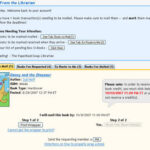Perhaps you’ve just found a good deal on a used fish tank at a garage sale, auction or swap meet. After all, it’s difficult to pass up a good deal. Fish tanks can be quite expensive and when you find one for next to nothing, you might as well give it a shot.
The first thing you will need to do, if you are planning on using this tank for fish instead of reptiles or pocket pets, is to be sure that is holds water. In order to do this you will need to:
- Place the tank in a location near a drain or outside if the weather will be nice for several days. Placing small tanks in a spare bath tub works well also.
- Fill the tank with water. Be sure to fill it all the way to the top. If filled only part way, you will only be detecting water leaks in the portion of the tank that is in contact with water. Damage to glass or even plastic on the top parts of the tank can pose a problem even if the tank will never be filled that high. Over time, cracks can increase in size. If there are cracks at the top one side of the tank, it can eventually creep lower and lower causing disaster later on. Also, cracks are simple a weak spot in the tank and will always cause a problem unless they are correctly repaired. Depending on the size and price of the tank you’ve obtained, sometimes repairing a crack can end up costing more than simply purchasing a tank new. It would also be a good idea to mark with a piece of masking tape the level of the water as it is when the tank is filled.
- Let the tank sit for several days. Check each day for moisture on the ground or floor around the tank as well as around the sides of the tank. Pay special attention to sealed corners and around the bottom edge of the tank. If you are keeping the tank outside, be sure to place it on a concrete or solid pad and do so only when the weather will be permitting. With rainfall, it is difficult to tell if a tank is leaking; the ground will be wet whether the tank is leaking or not and if it is a slow leak, it will continue to be filled with rainwater leading to a false result of a constantly full tank. One other fact to consider is that during very warm weather, evaporation may play a role in the water level. You’ll have to use your best judgment in this case, taking into consideration the amount of moisture around the sides of the tank and the ground around it compared to the amount of water that may have evaporated. Water can dry quickly on very hot concrete as well so check these tanks several times daily. If keeping the tank in a bath tub, plug the drain so any leaking water doesn’t escape your examination. Gauge the amount of water loss by comparing the water level to the masking tape.
- If after several days the tank has not leaked, you can be fairly sure that it is going to hold water. Not any weakness in the seals at the corners and bottom edges of the tanks. Aquarium Sealant can be purchased to help fix any weak spots. Only use sealants labeled for underwater use in aquariums.
Now that you have tested your tank for leaks, you will need to sanitize the tank. You can never be sure what lived in the tank, what diseases the occupants may have had, how long it sat in a garage, basement or back porch, or what other things the tank may have been exposed too. The best thing to use for these cases is bleach.
- Using a diluted bleach solution, and with gloves on, scrub the inside and outside of the tank being sure to pay special attention to corners and edges.
- Dump the excess solution out, and do it again.
- Again, dump and scrub again. It’s best to dump and scrub as many times as possible to be sure the tank is clean. A minimum of three times should be done.
- After the tank has been thoroughly scrubbed and cleaned, the next step is to rinse, rinse, and rinse. You simply cannot rinse enough. Rinse many, many times. When you think you’ve rinsed enough, rinse some more. Every last residue of the bleach solution needs to be removed in order to make it safe for adding fish.
Additional items that might have come with the tank such as filters, heaters, gravel and décor will also need to be cleaned, scrubbed, and thoroughly rinsed using diluted bleach. Filters will need to be taken apart and every piece will need cleansed. Purchasing new filter media is best for this type of situation as used ones cannot be sanitized thoroughly.
So, with a little elbow grease and lots of water you can get use out of those good deals and great finds at yard sales. If it’s cheap enough there’s no reason to pass it up as sanitizing a good non-leaking tank is fairly quick and easy.

